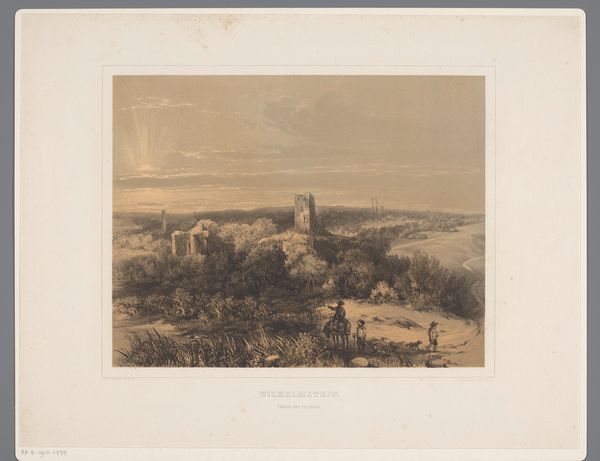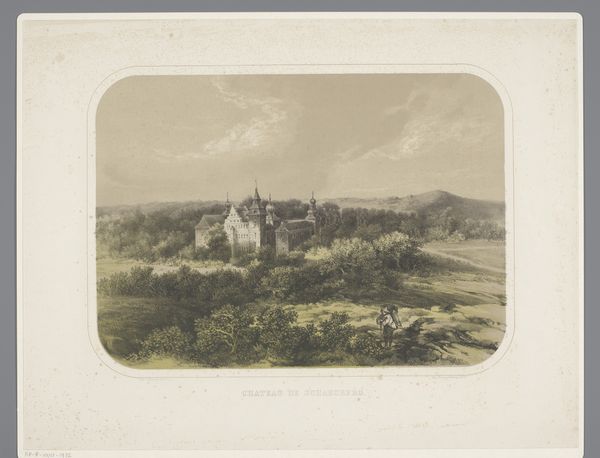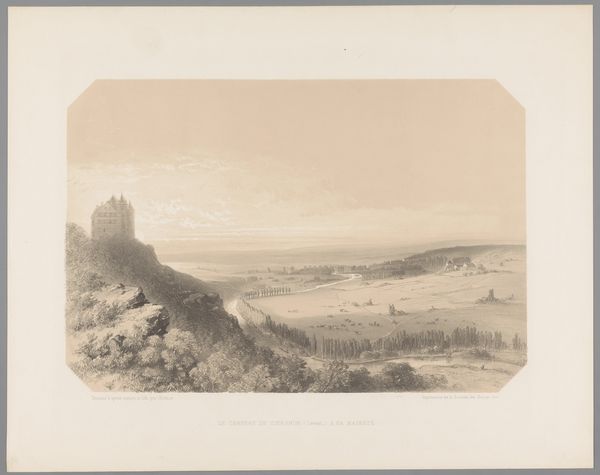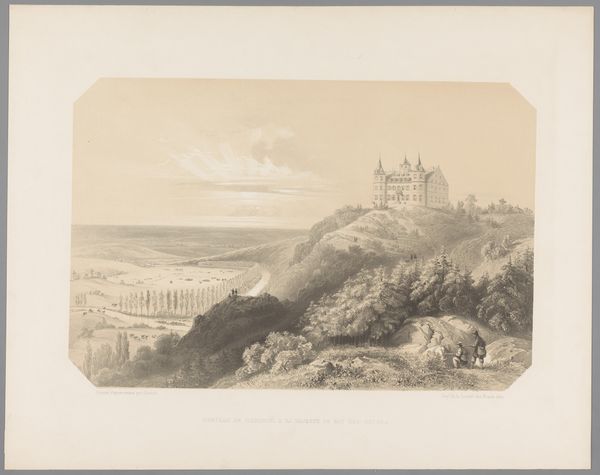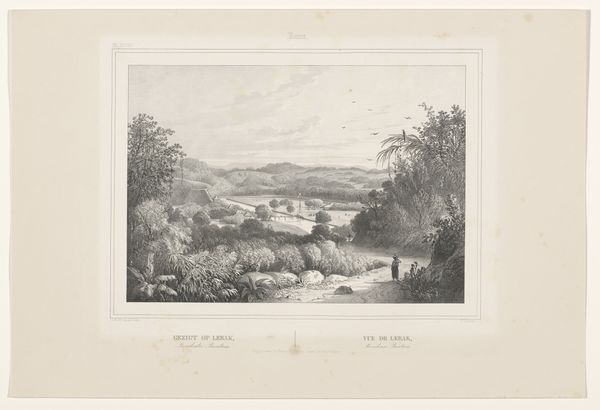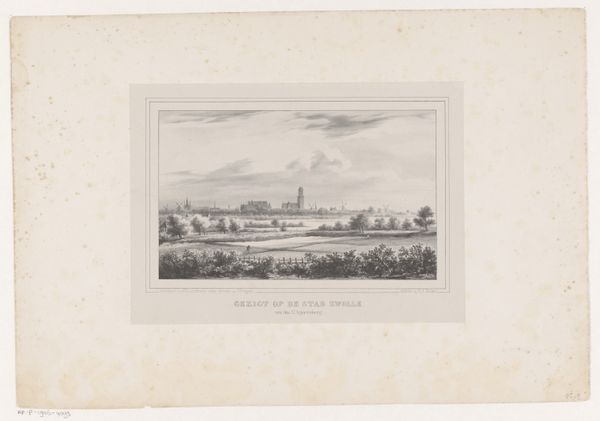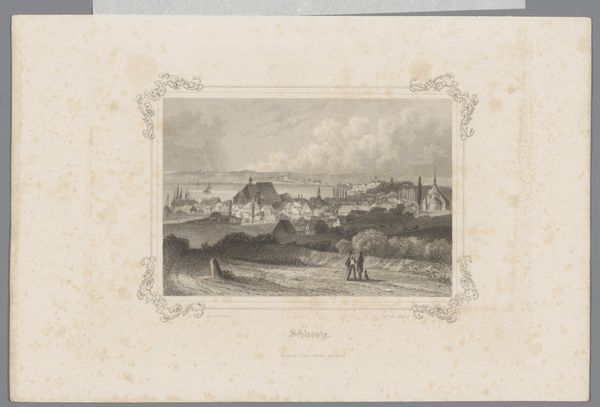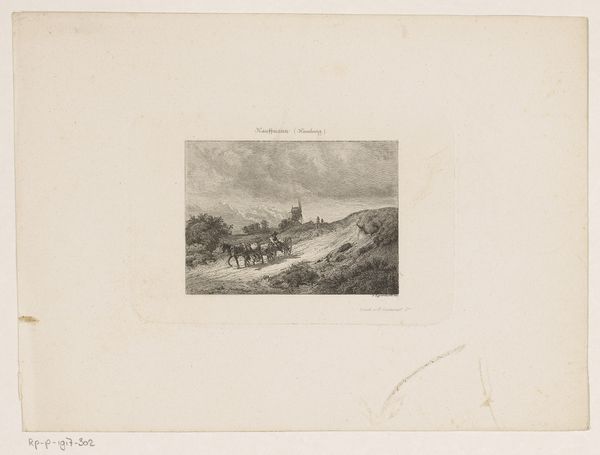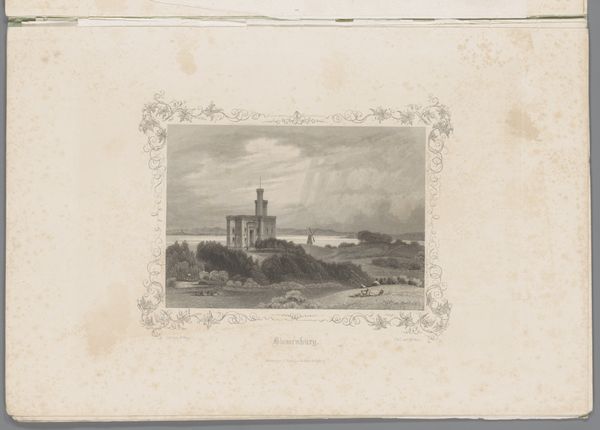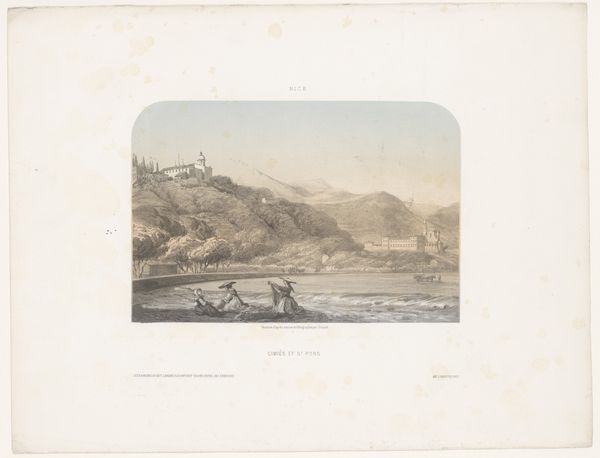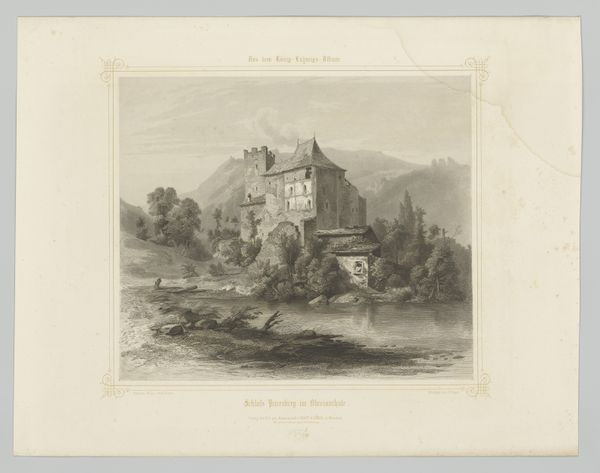
Dimensions: height 427 mm, width 550 mm
Copyright: Rijks Museum: Open Domain
Curator: Alexander Schaepkens's 1852 lithograph, "Abdij Rolduc," presents a captivating view of the famed abbey. It's currently held here at the Rijksmuseum. Editor: It has a very dreamy, almost ethereal quality. The muted tones, combined with the softness of the lithograph, lend it a rather nostalgic feel, as if looking at a fading memory. Curator: Indeed. Schaepkens produced this work during the Romantic era, and it's clear that the imagery reflects the fascination with historical subjects. These depictions were very popular for prints at the time, offering romantic visions of the past for a growing urban audience. Editor: Looking closely at the lithographic process, the transfer of the image from stone to paper created a softness that's particularly suited to landscapes. This era was also influenced by the emergence of photography. This also created mass-reproducibility that gave images broader circulation. I am always intrigued about the socio-economic impacts of those choices. Curator: That's a good point. These printed images allowed people to possess a little piece of historical or beautiful places they may never visit in person. We also must consider that this location was once part of the Holy Roman Empire before becoming part of the Netherlands, making the image part of the political construction. Editor: Absolutely, the landscape tradition also emphasizes control and possession of space, so these pieces became almost nationalistic! And think of the materiality involved. The mining of the lithographic stone, the production of the inks, the paper mills… all fueled by human labor, producing these idyllic visions. The sharp contrast of a peaceful abbey built through strenuous labor practices. Curator: The piece is evocative of a kind of serene dignity. Editor: For sure. It’s thought-provoking to think about how it invites viewers to reflect on history, but also on the modes of labor and resources which enabled such visual storytelling. Curator: The ability of lithography to bring imagery into the homes of a wider audience transformed cultural perspectives, especially through art and history. Editor: Indeed, a blend of material processes and its accessibility to contribute shaping perspectives in a fascinating dance between artistry and everyday life!
Comments
No comments
Be the first to comment and join the conversation on the ultimate creative platform.
